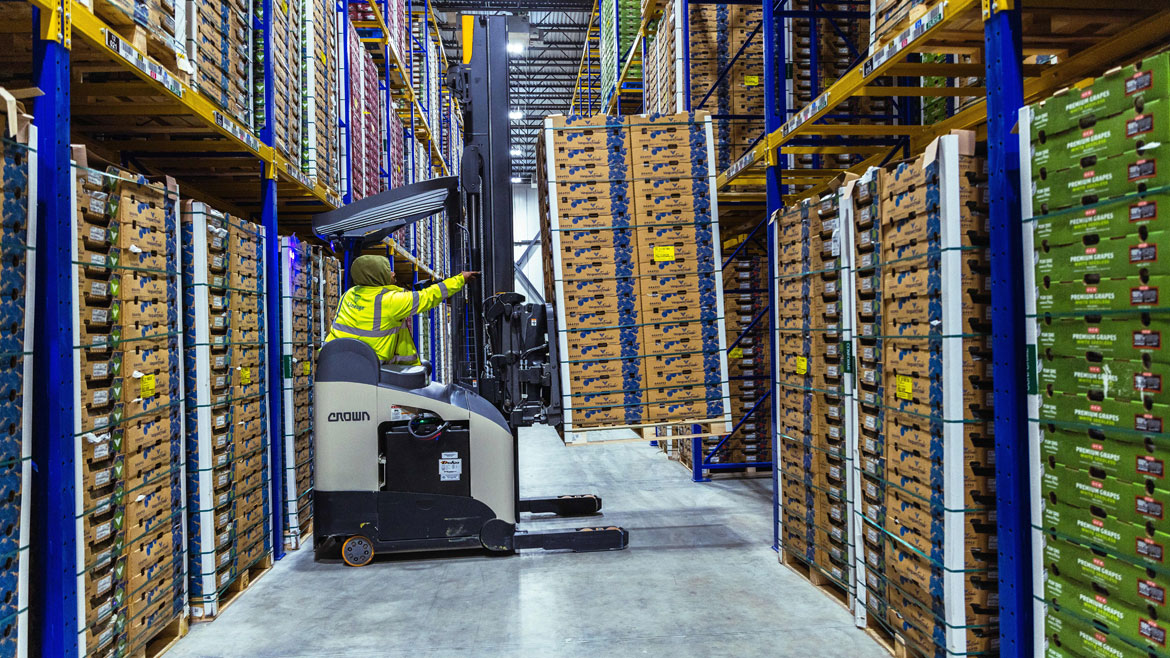Temperature-controlled warehousing is a critical component in the supply chain for industries dealing with perishable goods, pharmaceuticals, and other temperature-sensitive products. Technological advancements are revolutionizing this sector, enhancing efficiency, accuracy, and reliability. This article delves into the various technologies shaping temperature-controlled warehousing and their impact on the industry.
- Advanced Temperature Monitoring Systems
1.1 Internet of Things (IoT) Sensors
- Real-time Monitoring: IoT sensors provide continuous real-time monitoring of temperature, humidity, and other environmental conditions, ensuring products are stored under optimal conditions.
- Data Analytics: These sensors collect vast amounts of data that can be analyzed to identify trends, predict issues, and optimize storage conditions.
1.2 Automated Alerts and Reporting
- Instant Notifications: Automated systems can send instant alerts via SMS, email, or app notifications if there is a deviation from set temperature ranges.
- Compliance and Reporting: These systems generate detailed reports for compliance with regulatory requirements, making audits simpler and more accurate.
- Warehouse Management Systems (WMS)
2.1 Integration with Temperature Control
- Seamless Coordination: Modern WMS integrates with temperature control systems, ensuring real-time adjustments based on warehouse conditions.
- Inventory Optimization: By analyzing data from temperature control systems, WMS can optimize inventory placement to enhance energy efficiency and product safety.
2.2 Automated Inventory Tracking
- RFID and Barcode Scanning: These technologies enable precise tracking of inventory, reducing errors and enhancing traceability.
- **Real-time Updates: Automated tracking provides real-time inventory updates, improving stock management and reducing the risk of spoilage.
- Automation and Robotics
3.1 Automated Storage and Retrieval Systems (AS/RS)
- Increased Efficiency: AS/RS can quickly and accurately store and retrieve products, reducing handling times and labor costs.
- Consistent Temperature Maintenance: These systems minimize the frequency of opening cold storage areas, maintaining consistent temperatures and reducing energy consumption.
3.2 Robotics
- Precision Handling: Robots equipped with advanced sensors can handle products with precision, ensuring they are not damaged and are stored under the right conditions.
- 24/7 Operations: Robots can work continuously without breaks, significantly enhancing productivity and operational efficiency.
- Energy Management Technologies
4.1 Smart Energy Systems
- Energy Monitoring: Smart energy systems monitor and manage energy consumption in real-time, identifying areas for efficiency improvements.
- Automated Adjustments: These systems can automatically adjust energy usage based on current demands, reducing costs and environmental impact.
4.2 Renewable Energy Integration
- Solar and Wind Power: Integrating renewable energy sources can reduce dependency on traditional power sources and lower carbon footprints.
- Battery Storage Solutions: Advanced battery storage can ensure a steady power supply, even during outages, maintaining optimal storage conditions.
- Artificial Intelligence (AI) and Machine Learning
5.1 Predictive Analytics
- Demand Forecasting: AI can analyze historical data to predict demand, helping businesses manage inventory more effectively and reduce waste.
- Preventative Maintenance: Machine learning algorithms can predict equipment failures before they occur, scheduling maintenance to prevent downtime.
5.2 Warehouse Optimization
- Layout Optimization: AI can optimize warehouse layouts for maximum efficiency, considering factors such as temperature zones and product turnover rates.
- Workflow Automation: AI can streamline workflows, reducing manual intervention and improving overall operational efficiency.
- Blockchain for Traceability and Transparency
6.1 Secure Data Management
- Immutable Records: Blockchain provides a secure and immutable way to record transactions, ensuring data integrity and transparency.
- Enhanced Traceability: Blockchain can track products from production to storage and distribution, providing a transparent and traceable supply chain.
6.2 Compliance and Quality Assurance
- Regulatory Compliance: Blockchain can simplify compliance with regulatory requirements by providing a clear and traceable record of all transactions and storage conditions.
- Quality Control: Ensures that products meet quality standards by maintaining a transparent record of their storage and handling conditions.
Conclusion
Technology is playing a pivotal role in transforming temperature-controlled warehousing. From advanced monitoring systems and automated inventory tracking to AI-driven analytics and blockchain transparency, these innovations are enhancing efficiency, accuracy, and reliability. Businesses that leverage these technologies can ensure the safe and efficient storage of temperature-sensitive products, ultimately leading to better product quality, reduced waste, and increased customer satisfaction. As the industry continues to evolve, the adoption of these technologies will be essential for staying competitive and meeting the growing demands of a global market.


 Dave McGowan has been a member of the WEL Family since May 1989. He is a husband and father of two children. Dave is also a U.S. Army veteran and served in Vietnam in 1971-1972, and he attended driving school soon after he was released from the military in 1974.
Dave McGowan has been a member of the WEL Family since May 1989. He is a husband and father of two children. Dave is also a U.S. Army veteran and served in Vietnam in 1971-1972, and he attended driving school soon after he was released from the military in 1974. During his career with WEL, Phil has worked as a driver, dispatcher, terminal manager and customer service manager. He says he always was a driver first, though non-driving jobs taught him financial management that helps him as an owner-operator.
During his career with WEL, Phil has worked as a driver, dispatcher, terminal manager and customer service manager. He says he always was a driver first, though non-driving jobs taught him financial management that helps him as an owner-operator.